When it comes to maintaining a comfortable and healthy living environment, homeowners often focus on aspects such as temperature control, indoor air quality, and insulation. However, there’s a hidden area of your home that might be silently affecting all of these factors: the crawl space. Beneath your feet, this often overlooked space plays a crucial role in the overall well-being of your home, and one of the most insidious culprits that can wreak havoc within it is crawl space humidity.
In this comprehensive guide, we will delve deep into the realm of crawl space humidity – its causes, effects, and the array of solutions available to combat this seemingly invisible threat. By understanding the mechanisms at play and implementing the right strategies, you can ensure that your crawl space remains dry, structurally sound, and contributes positively to the health of your home.
From here you can read more about the problems a crawl space can impose.
Cracking the Code: The Causes of Crawl Space Humidity
To comprehend the challenge of crawl space humidity, it’s essential to first grasp the various factors that contribute to its emergence. The crawl space, often a dark and confined area beneath the main living areas, is uniquely susceptible to moisture-related issues. Here are some common causes that can lead to crawl space humidity:
Moisture Infiltration
Water has a tenacious way of finding its path into your crawl space. This can occur through foundation walls, the crawl space floor, or even from leaky plumbing pipes. Heavy rainfall, improper drainage systems, or grading problems around your home can exacerbate moisture infiltration, turning your crawl space into a damp haven.
Ventilation Woes
Traditionally, crawl spaces were designed with vents that were intended to promote air circulation and prevent moisture buildup. However, these vents can sometimes introduce more humid air from the outside, especially during hot and humid weather. Paradoxically, this can worsen the humidity problem rather than alleviate it.
The Condensation Conundrum
A significant temperature difference between your crawl space and the rest of your home can lead to condensation forming on surfaces within the crawl space. This can include pipes, ducts, and even insulation materials. As droplets accumulate, they create a fertile breeding ground for mold, mildew, and other moisture-related issues.
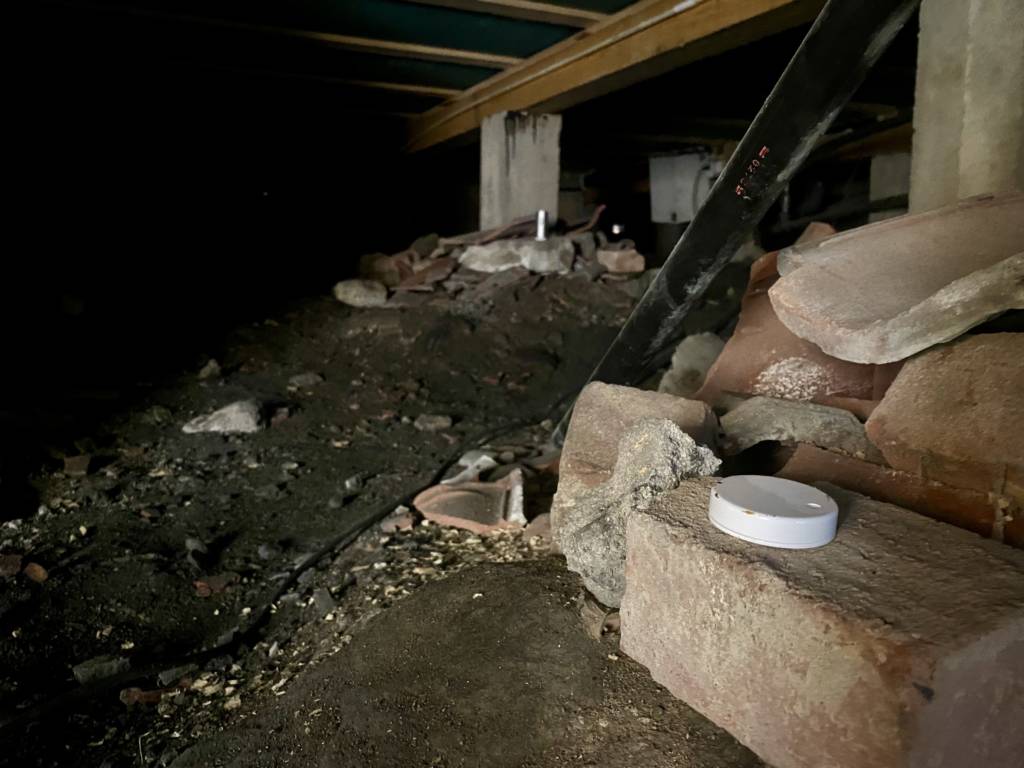
Damp Soil Dilemma
The location and composition of the soil beneath your crawl space can play a pivotal role in moisture management. If your crawl space is built over damp or poorly drained soil, moisture can easily migrate through the floor and walls, adding to the overall humidity levels.
Unaddressed crawl space humidity can have far-reaching consequences that extend beyond the confines of this concealed area. In the following sections, we will explore the effects of crawl space humidity on your home’s structural integrity, indoor air quality, and your family’s well-being. Additionally, we will delve into a range of effective solutions that can help you regain control over this crucial yet often underestimated aspect of home maintenance.
The Ripple Effect: Unveiling the Effects of Crawl Space Humidity
The impacts of crawl space humidity are not confined solely to the crawl space itself; they can radiate throughout your entire home. Understanding these effects is paramount in realizing the urgency of addressing crawl space humidity. Let’s take a closer look at the potential consequences:
Mold and Mildew Onslaught
Excessive humidity creates an ideal environment for mold and mildew to flourish. These unsightly and potentially harmful microorganisms not only degrade building materials, but their spores can also become airborne, circulating through your home’s ventilation system and compromising indoor air quality. Prolonged exposure to mold spores can lead to respiratory issues, allergies, and other health concerns for your family.
Undermining Structural Integrity
Crawl space humidity can have a detrimental impact on your home’s structural integrity. Wood rot, a natural consequence of high moisture levels, can compromise the stability of floor joists, beams, and subflooring. Over time, this can weaken the overall structure of your home and necessitate costly repairs.
Inviting Pests and Critters
Damp environments are an open invitation to pests such as termites, rodents, and insects. These unwelcome visitors can cause further damage to your home’s structure, exacerbating the issues caused by crawl space humidity.
Energy Efficiency Takes a Hit
Your crawl space’s condition can affect the overall energy efficiency of your home. Damp insulation loses its insulating properties, and condensation on HVAC components can decrease heating and cooling efficiency, leading to higher energy bills.
Indoor Air Quality Challenges
The air in your crawl space doesn’t stay confined there – it can infiltrate the living areas above. Poor crawl space air quality can introduce musty odors and potentially harmful particles into your home’s breathing air, exacerbating allergies and respiratory problems for occupants.
What Are Acceptable Humidity Levels Inside a Crawl Space?
Acceptable levels of humidity inside a crawl space are approximately from 35% to 65% of relative humidity. In these conditions, the least amount of harmful things can happen. Keep in mind that relative humidity is relative to temperature. This means that if the space heats up or cools down quickly, it can have quick effects on relative humidity. Relative humidity can rise to harmful levels especially during summer, as warm air is entering the space and it’s cooled down due to the cooling effect of the ground.
What Happens if The Humidity Is Too High?
Mold and air pollutants can grow in humid spaces and you want to make sure not to give them a chance to spread around your crawl space. In most homes, the air inside crawl space ends up in the living quarters imposing problems to the indoor air quality.
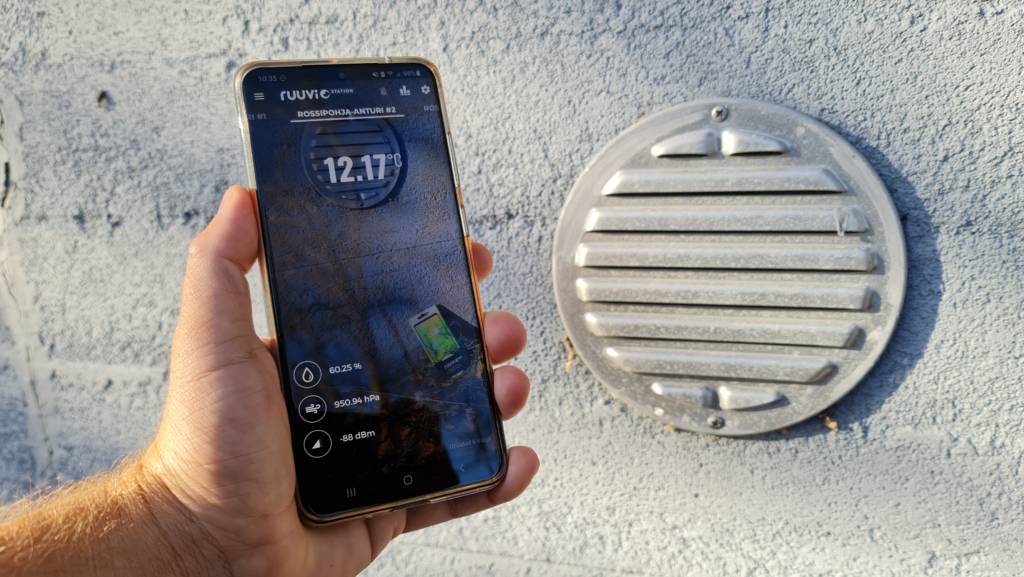
Solutions That Stand the Test of Time: Battling Crawl Space Humidity
Given the far-reaching consequences of crawl space humidity, it’s imperative to take proactive steps to address and mitigate the issue. Here are some effective solutions that can help you regain control over your crawl space environment.
Crawl space encapsulation involves sealing the area with a durable vapor barrier and insulation. This prevents moisture from infiltrating the space, creating a dry and controlled environment. Additionally, a dehumidifier can be installed to maintain optimal humidity levels.
Also, depending on your specific situation, you may consider sealing or closing crawl space vents to prevent the introduction of humid outdoor air. This strategy can be especially beneficial in humid climates. Proper grading around your home’s foundation and the installation of effective drainage systems can divert water away from the crawl space, reducing the risk of moisture infiltration.
Investing in a high-quality crawl space dehumidifier can be a game-changer. These units are specifically designed to handle the unique challenges posed by crawl spaces, ensuring that humidity levels remain in check. Tho keep in mind that regular inspections of your crawl space can help catch potential issues before they escalate. Promptly addressing leaks, water intrusions, or other problems can prevent long-term damage.
To be sure that everything is in good condition in your crawl space, you should install a crawl space humidity monitoring system in there. By having access to real-time data and data logs, you can rest assured that your crawl space is being monitored constantly.
Ruuvitag: The Perfect Crawl Space Humidity Sensor
In the quest to maintain a dry, comfortable, and structurally sound home, the crawl space often remains an overlooked and underestimated area. Yet, this concealed space plays a vital role in the overall health of your living environment. One of the most effective tools for combating crawl space humidity is the RuuviTag – a versatile and reliable sensor that has proven itself as an ideal companion for crawl space humidity monitoring.
Understanding the RuuviTag Advantage as a Crawl Space Humidity Sensor
RuuviTag is a small, compact sensor designed to provide accurate and real-time measurements of various environmental parameters, including temperature, humidity, air pressure, and acceleration. This unassuming device has gained significant popularity in the realm of crawl space humidity monitoring, and for good reason.
The RuuviTag boasts impressive accuracy when it comes to measuring humidity levels. Its sensor technology ensures that you receive precise and reliable data, enabling you to make informed decisions about the moisture content in your crawl space.
Crawl spaces are often tight, confined spaces that require unobtrusive and space-efficient solutions. The RuuviTag’s compact design allows it to fit seamlessly into even the most cramped crawl spaces, ensuring minimal disruption to the area.
Installing the RuuviTag is a straightforward process. Its simple setup and configuration make it accessible to both tech-savvy homeowners and those less familiar with technology.
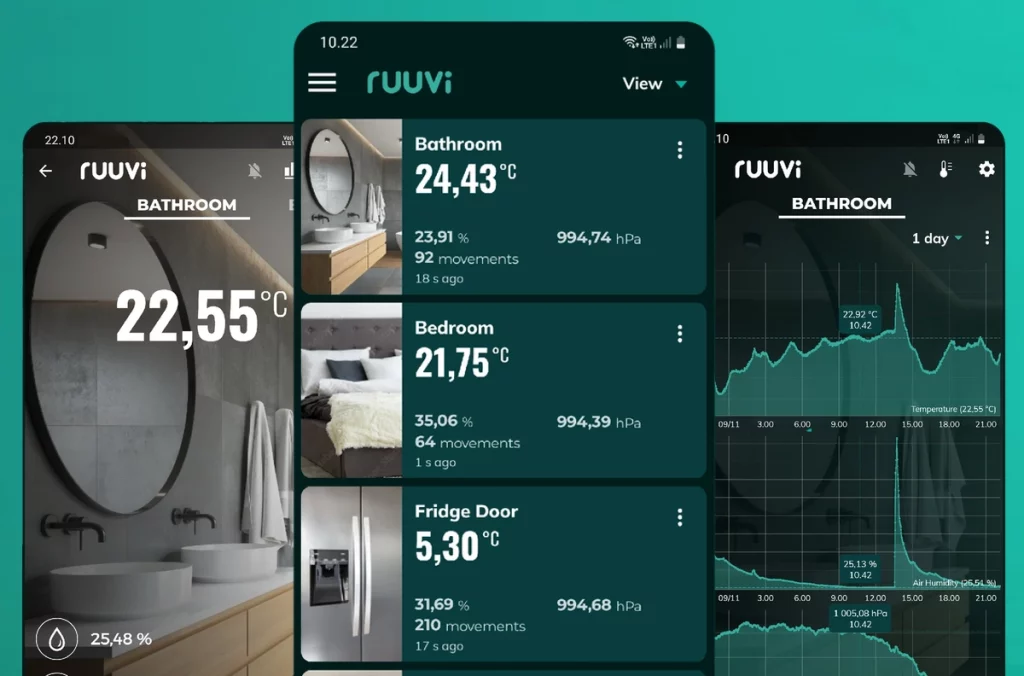
RuuviTags features make it a solid guardian of a crawl space
One of the standout features of the RuuviTag is its wireless connectivity. Equipped with Bluetooth technology, the RuuviTag can transmit data to your smartphone or other compatible devices. This means you can conveniently monitor crawl space humidity levels from the comfort of your living room, providing real-time updates without the need for constant physical presence in the crawl space.
Crawl space monitoring often requires devices that can withstand extended periods without intervention. The RuuviTag’s long-lasting battery life ensures that you can rely on continuous monitoring without frequent battery replacements.
Receive alerts and examine history graphs
RuuviTag offers the flexibility to set up customizable alerts. When crawl space humidity levels deviate from your desired range, the sensor can send you notifications, enabling you to take timely action and prevent potential issues before they escalate. The RuuviTag’s ability to log and store data over time allows you to track humidity trends and fluctuations. This historical data can be invaluable when assessing the effectiveness of moisture control strategies and making informed decisions about crawl space maintenance.
When compared to other professional crawl space monitoring systems, the RuuviTag offers an affordable alternative without compromising on functionality or accuracy.
Take the Data With You to Wherever You Go
Ruuvi Gateway is a device making RuuviTags measurement data to the internet. More specifically to our cloud service, making the data accessible over the internet. If you want to receive alerts even though you go on for a trip, Ruuvi Gateway makes sure to let you know if something is not running smoothly.
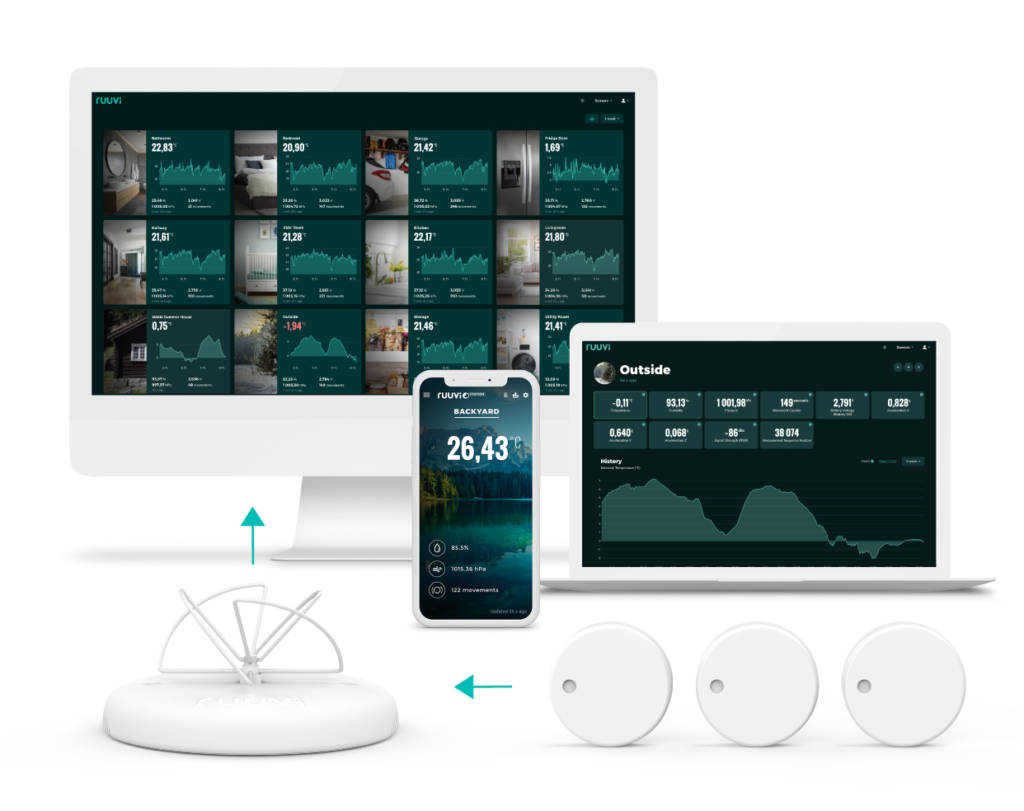
In Conclusion
The RuuviTag stands out as an exceptional tool for crawl space humidity monitoring. Its precision, reliability, compact design, wireless connectivity, and long battery life make it a well-rounded choice for homeowners looking to combat crawl space humidity effectively. By partnering with the RuuviTag, you can gain valuable insights into your crawl space’s moisture levels, take proactive measures to prevent issues, and ultimately contribute to a healthier, more comfortable home environment.
Buy a crawl space humidity sensor
RuuviTag helps you to monitor crawl space wirelessly
39,90€
Ruuvi is based in Finland. If you’re an EU consumer, VAT is included. If you’re a non-EU customer, you don't pay VAT. If you're an EU business, insert your VAT ID at checkout.
In stock
RuuviTag Sensor (4in1)
| 5 star | 89% | |
| 4 star | 11% | |
| 3 star | 0% | |
| 2 star | 0% | |
| 1 star | 0% |
RuuviTag Sensor (4in1)
| Quantity | Unit Price(€) |
|---|---|
| 1 | 39,90 |
| 2 | 37,40 |
| 3-5 | 36,90 |
| 6-8 | 35,90 |
| 9-12 | 34,90 |
| 13-25 | 33,90 |
| 26-99 | 32,90 |
Are you looking for bigger quantities? Contact us for pricing.
FAQ
What is an acceptable humidity for a crawl space?
An acceptable humidity range for a crawl space is typically between 35% and 65%. This helps prevent mold, wood rot, and pest issues while maintaining structural integrity and indoor air quality.
Is 70% humidity too high for crawl space?
Yes, a humidity level of 70% is too high for a crawl space. High humidity levels in the crawl space can lead to mold growth, wood rot, pest infestations, and other moisture-related problems.
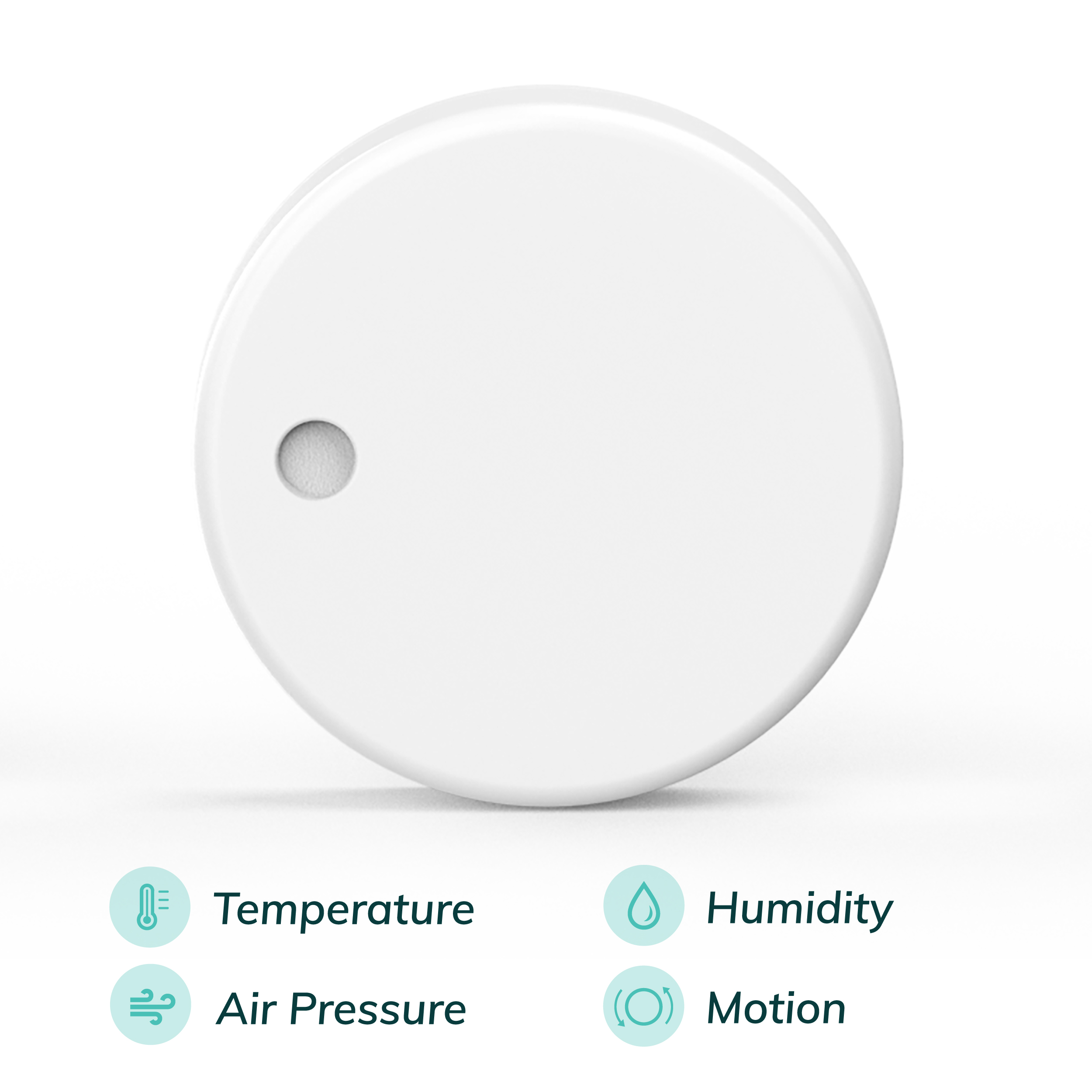
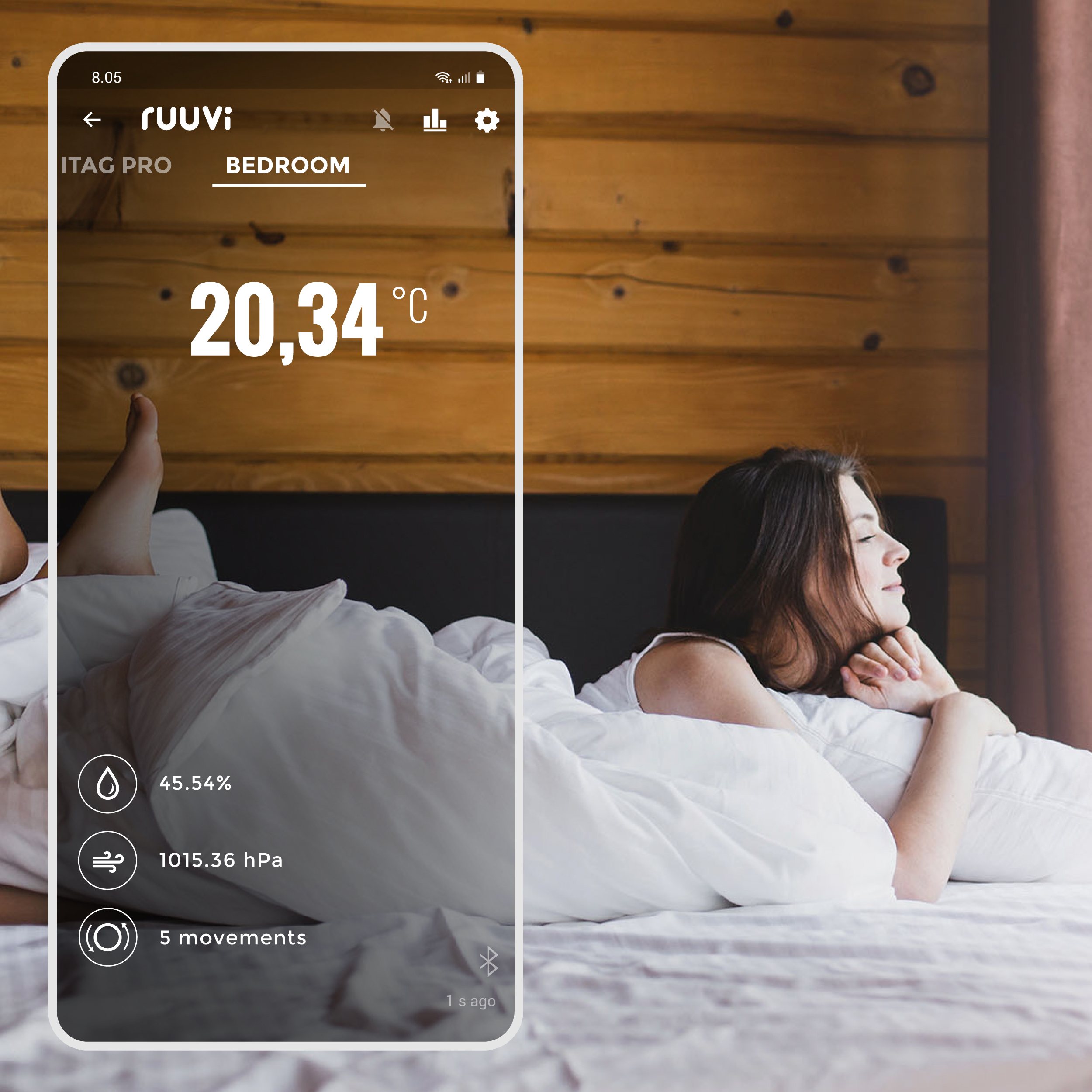
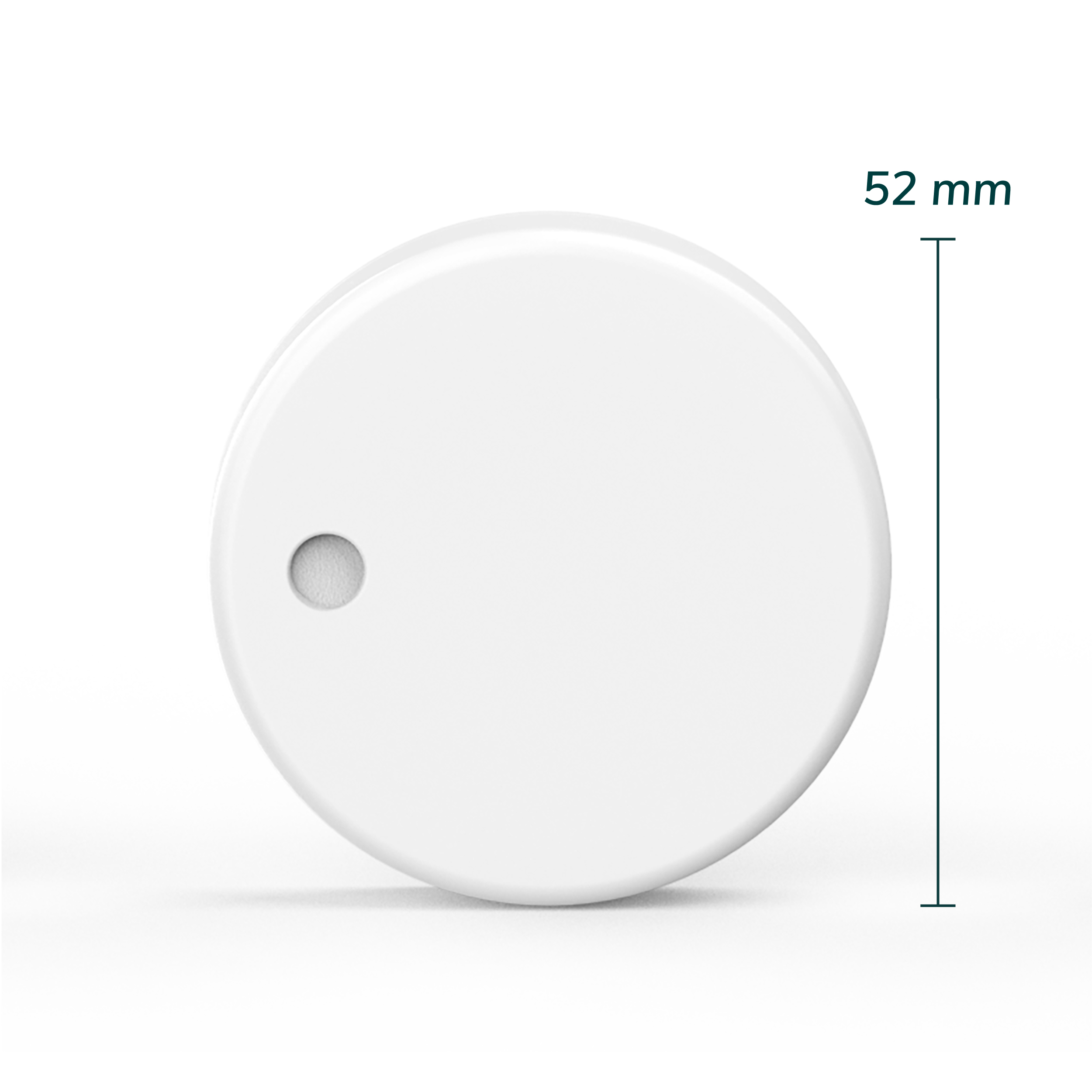
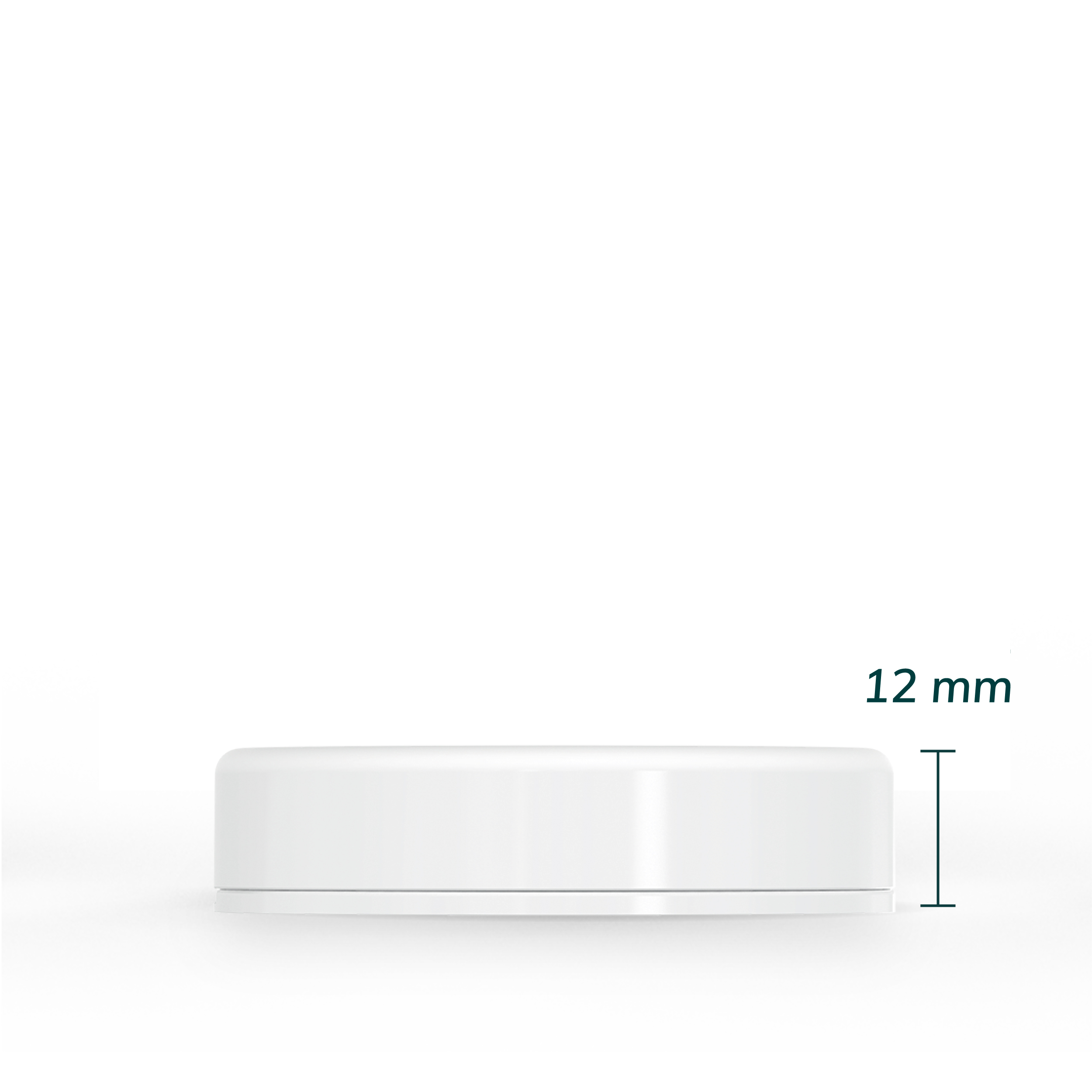
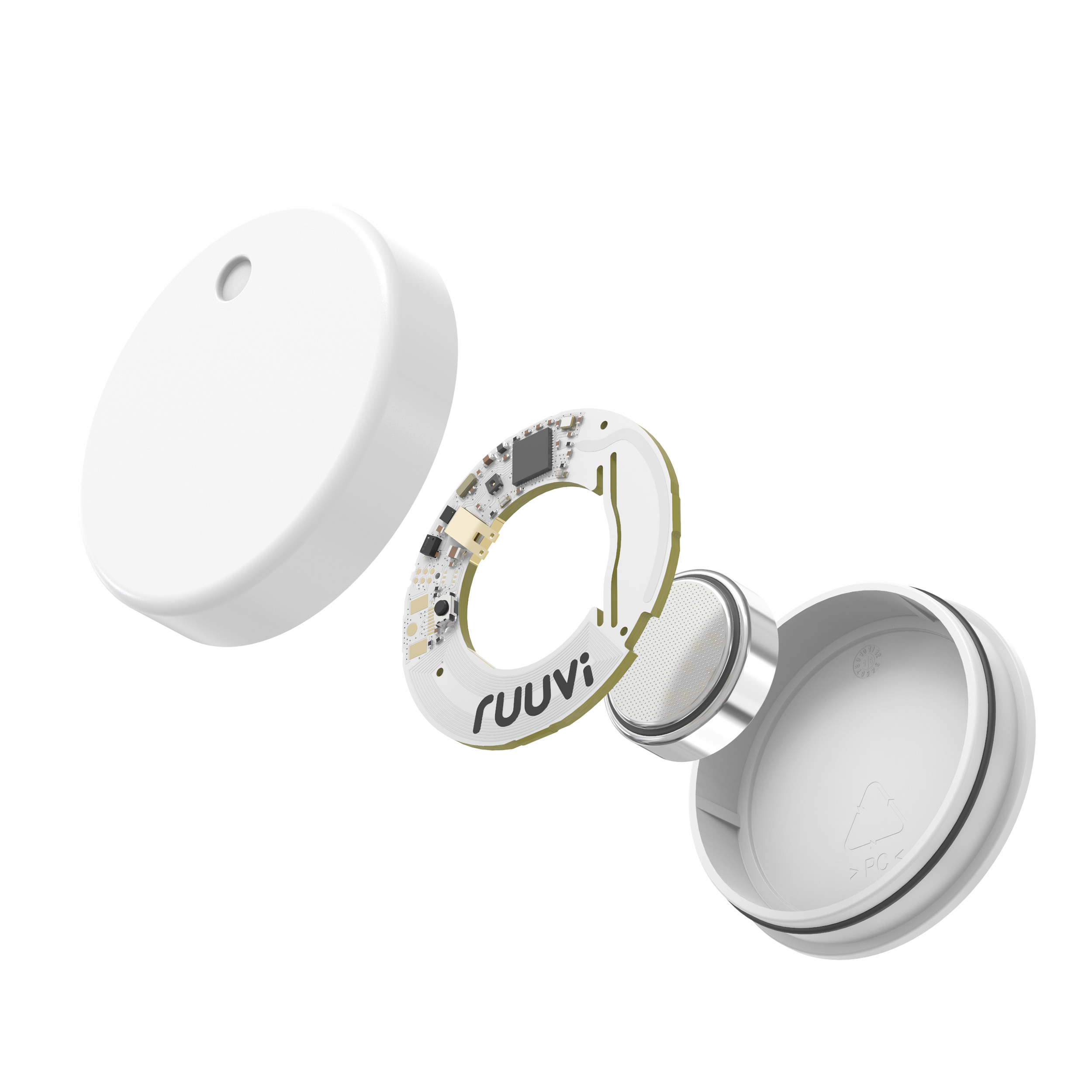
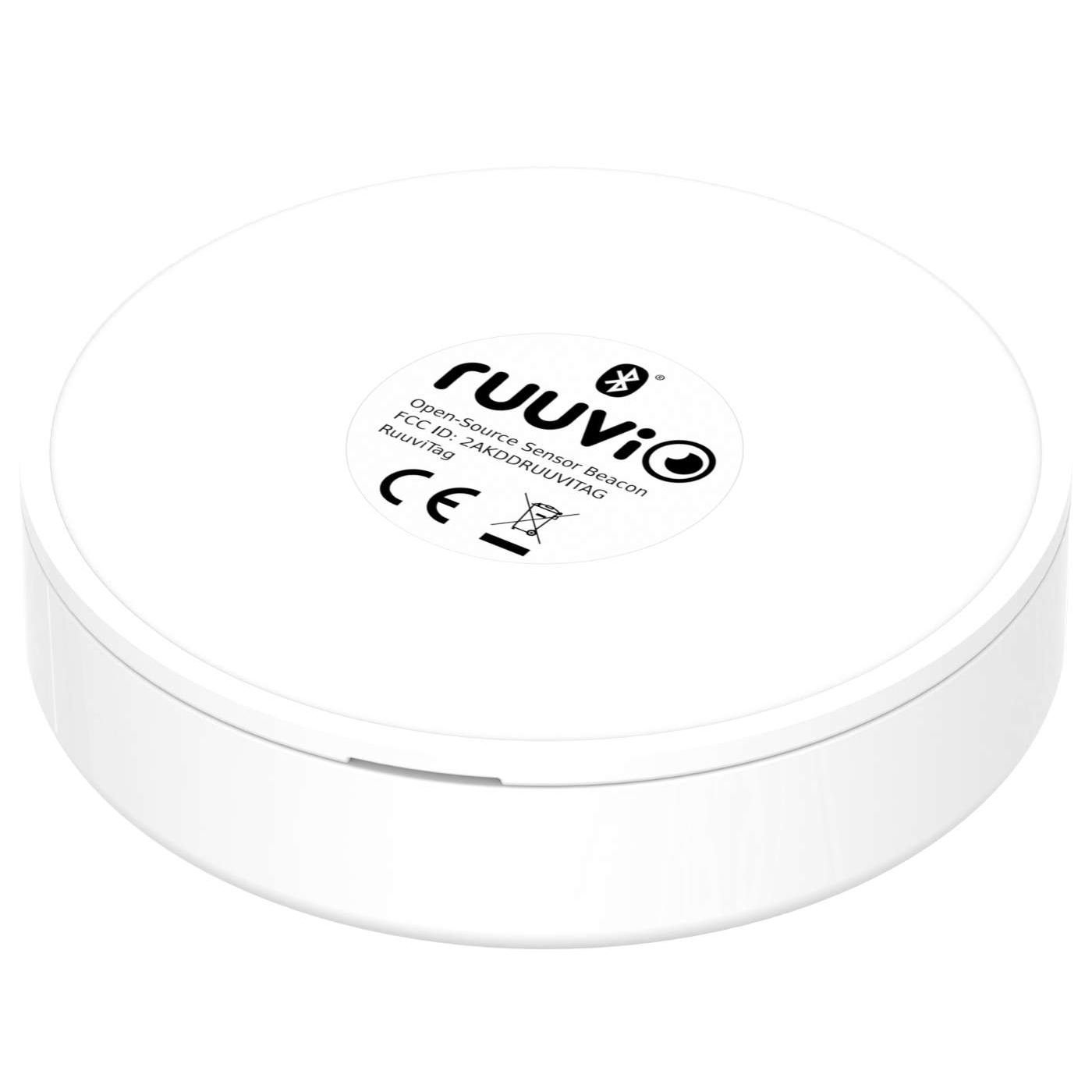
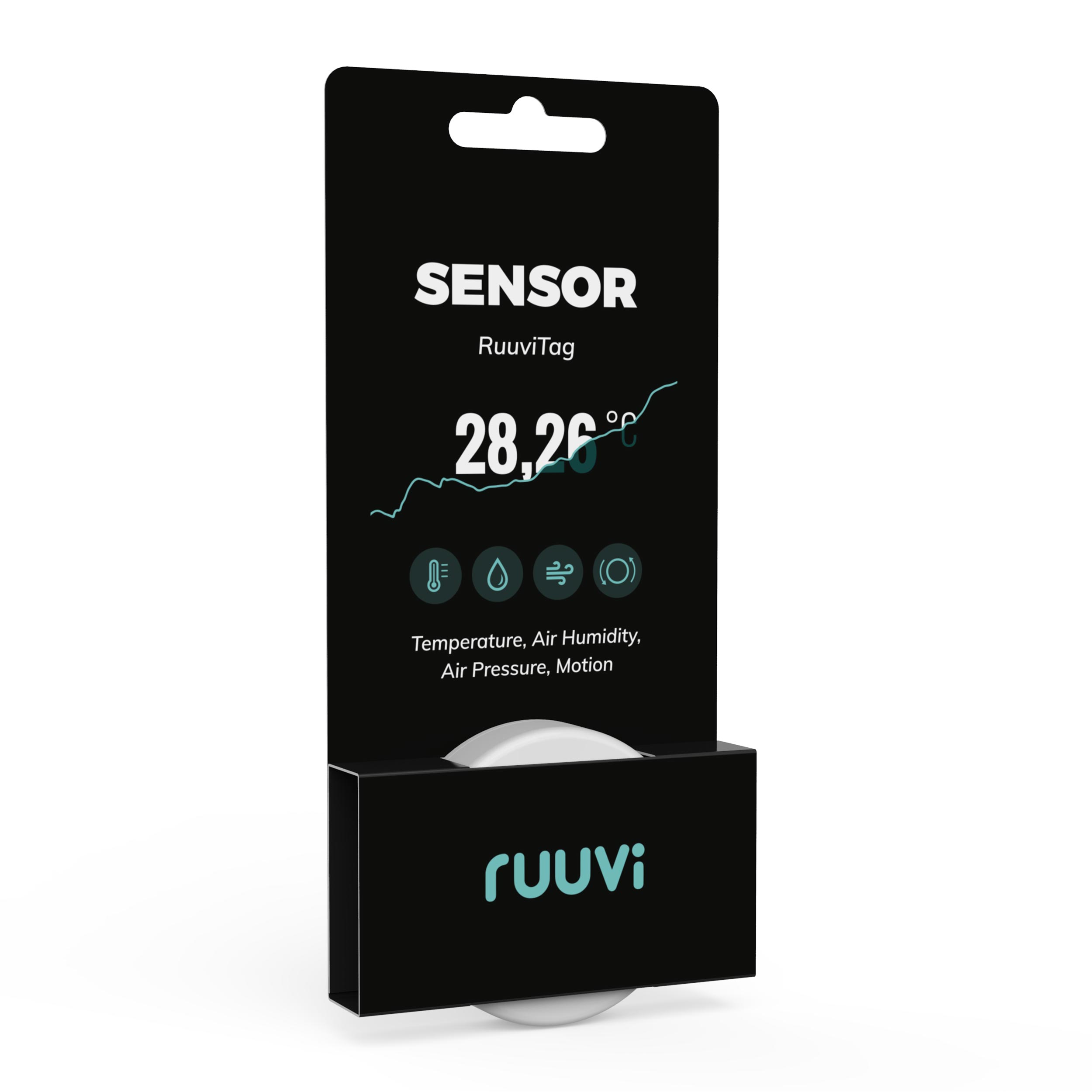
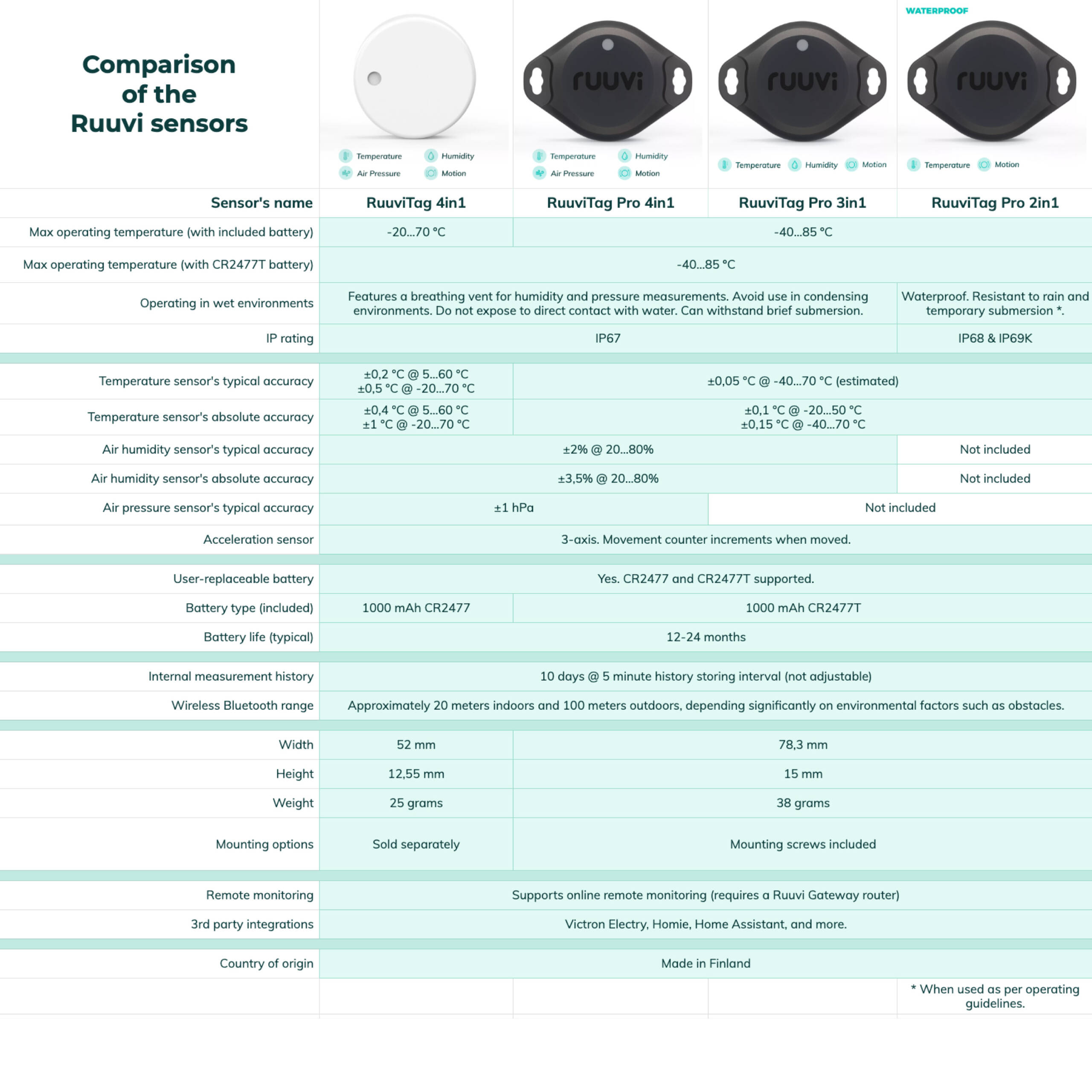

I have been a loyal user of the RUUVI products for years, and I couldn’t be happier with their quality and performance. Recently, when I faced an issue on my last shopping, the company’s support team went above and beyond to help me. Their dedication and personal follow-up truly impressed me and reinforced why I trust and recommend RUUVI so highly. If you want a reliable and innovative product, look no further than RUUVI. Highly recommended!
A tremendous little sensor that just works. The data it provides is consistently reliable, and the battery life has been excellent. I now have several of them dotted around the house — and also in the motorhome — and they’ve all been rock-solid. Whether I’m checking temperature, humidity, or movement, they report instantly and have never let me down. A simple, dependable sensor that does exactly what it promises.
I have a Ruuvi tags all around my house, they are great and have amazing integrations with Victron and Home Assistant makes these the most amazing environmental house montioring tool ever!
reliable works as advertised
Works extremely well, and seamlessly with both the Ruuvi iPhone app and Ruuvi Gateway.